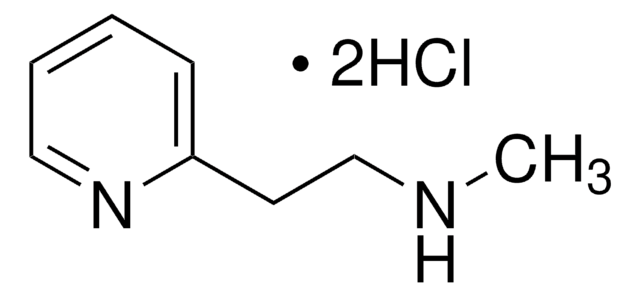C8661
Cobalt(II) chloride hexahydrate
BioReagent, suitable for cell culture, suitable for insect cell culture
Sinónimos:
Cobaltous chloride hexahydrate
About This Item
Productos recomendados
grado
reagent
presión de vapor
40 mmHg ( 0 °C)
Línea del producto
BioReagent
Formulario
powder
técnicas
cell culture | insect: suitable
cell culture | mammalian: suitable
cadena SMILES
O.O.O.O.O.O.Cl[Co]Cl
InChI
1S/2ClH.Co.6H2O/h2*1H;;6*1H2/q;;+2;;;;;;/p-2
Clave InChI
GFHNAMRJFCEERV-UHFFFAOYSA-L
¿Está buscando productos similares? Visita Guía de comparación de productos
Aplicación
- Synthesis, Characterization, and Biological Activities of Novel Vanadium(IV) and Cobalt(II) Complexes: Investigates the synthesis of novel cobalt(II) complexes and their potential biological applications, particularly emphasizing their bioactive properties in various cellular models (Damena T, Zeleke D, Desalegn T, et al. 2022. ACS Omega).
Palabra de señalización
Danger
Frases de peligro
Consejos de prudencia
Clasificaciones de peligro
Acute Tox. 4 Oral - Aquatic Acute 1 - Aquatic Chronic 1 - Carc. 1B Inhalation - Eye Dam. 1 - Muta. 2 - Repr. 1B - Resp. Sens. 1 - Skin Sens. 1
Código de clase de almacenamiento
6.1C - Combustible acute toxic Cat.3 / toxic compounds or compounds which causing chronic effects
Clase de riesgo para el agua (WGK)
WGK 3
Punto de inflamabilidad (°F)
Not applicable
Punto de inflamabilidad (°C)
Not applicable
Equipo de protección personal
Eyeshields, Faceshields, Gloves, type P3 (EN 143) respirator cartridges
Elija entre una de las versiones más recientes:
Certificados de análisis (COA)
¿No ve la versión correcta?
Si necesita una versión concreta, puede buscar un certificado específico por el número de lote.
¿Ya tiene este producto?
Encuentre la documentación para los productos que ha comprado recientemente en la Biblioteca de documentos.
Los clientes también vieron
Nuestro equipo de científicos tiene experiencia en todas las áreas de investigación: Ciencias de la vida, Ciencia de los materiales, Síntesis química, Cromatografía, Analítica y muchas otras.
Póngase en contacto con el Servicio técnico












